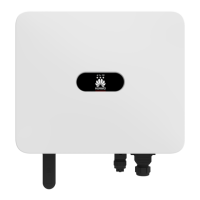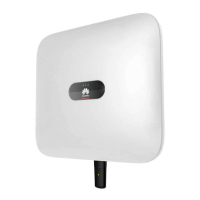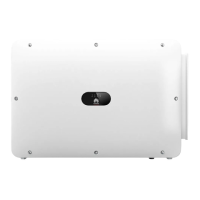PV– and the ground to above 0 V through voltage compensation.) When designing
a PV plant, conrm with the PV module manufacturer that the anti-PID voltage
compensation direction of the PV module is the PV– positive oset. Otherwise, PV
modules may be damaged.
Procedure
Step 1 ChooseSettings > Feature Parameters. The parameter setting screen is displayed.
Figure 7-10 Built-in PID Recovery
SUN2000-(100KTL, 110KTL, 125KTL) Series
User Manual 7 Man-Machine Interactions
Issue 07 (2020-09-15) Copyright © Huawei Technologies Co., Ltd. 83

